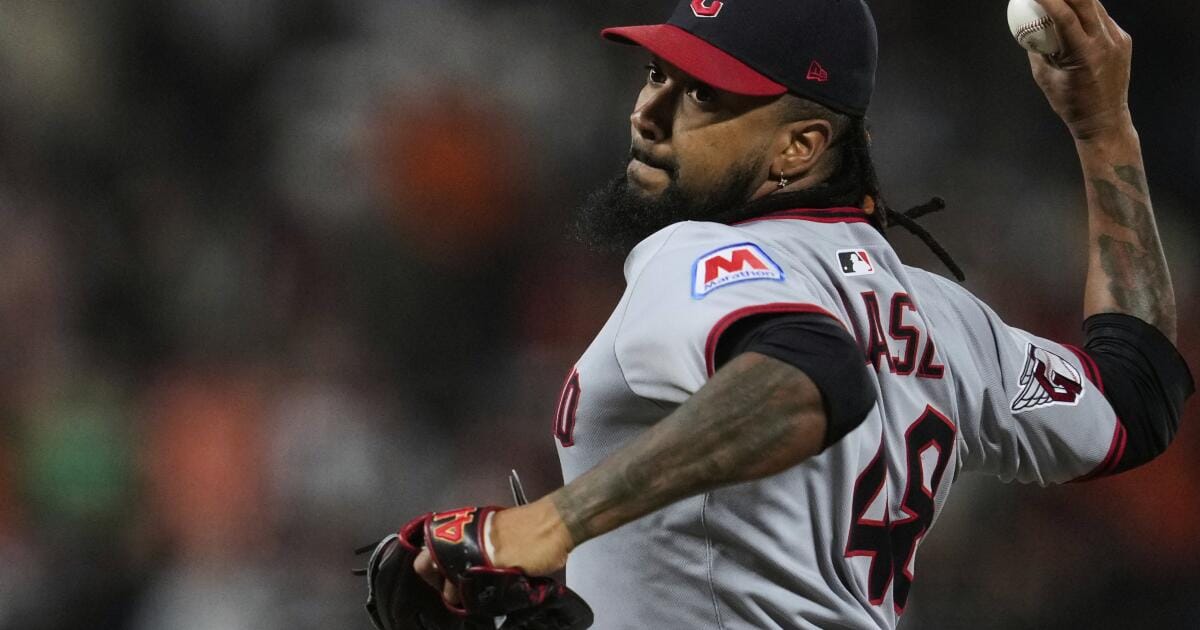Guardians’ Emmanuel Clase and Luis Ortiz indicted for pitch rigging
Cleveland Guardians closer Emmanuel Clase and starter Luis Ortiz face federal charges of fraud, bribery and conspiracy for allegedly intentionally throwing pitches outside the strike zone so bettors could wager correctly on whether pitches would be balls or strikes.
The 23-page indictment filed in the Eastern District of New York outlines several incidents, including one this season that involved the Dodgers.
During a game at Cleveland on May 28, the indictment states that Clase threw a pitch that was meant to be a ball, but Dodgers outfielder Andy Pages swung and missed, resulting in a strike. Clase retired the side in order for his 11th save of the season in Cleveland’s 7-4 victory.
About 20 minutes later, the indictment states that “Bettor-1” sent a message to Clase of a GIF of a man hanging himself with toilet paper. Clase allegedly responded to “Bettor-1” with a GIF of a sad puppy dog face.
The indictment states that from 2023 to 2025, bettors “won at least $400,000 from the Betting Platforms on pitches thrown by” Clase.
Ortiz joined the scheme in 2025, according to the indictment: “Ortiz agreed to throw balls (instead of strikes) on certain pitches in exchange for bribes or kickbacks.” Clase allegedly served as middle man between the bettors and Ortiz.
The indictment states the alleged scheme started as early as May 2023 with Clase, who purposely threw pitches outside the strike zone so bettors could win proposition bets.
“The bettors wagered on the speed and type of Clase’s pitches, based on information they knew in advance by coordinating with Clase, sometimes even during MLB games,” the indictment said. “Clase often threw these pitches on the first pitch of an at-bat. To ensure certain pitches were called as balls, Clase often threw many of them in the dirt, well outside the strike zone.”
Clase, 27, is one of the top closers in baseball. The right-hander from the Dominican Republic led the American League in saves in 2022, 2023 and 2024 and has a career earned-run average of 1.88 to go with 182 saves.
Clase signed a five-year, $20-million contract in April 2022 that included a $2-million signing bonus. The deal also includes $10 million club options for 2027 and 2028.
Ortiz, also from the Dominican Republic, was traded to the Guardians before the 2025 season after spending three seasons with the Pittsburgh Pirates.
Both pitchers were placed on non-disciplinary paid leave in July when MLB launched an investigation and were moved to the restricted list when the regular season ended. The Ohio Casino Control Commission also started an investigation.
If convicted on all charges, both pitchers face up to 65 years in prison.
ESPN reported that the betting-integrity firm IC360 sent alerts to sportsbook operators regarding two pitches thrown by Ortiz in June. The first came when Ortiz spiked a slider in the dirt to open the second inning against the Seattle Mariners. The second came when Ortiz opened the third inning against the St. Louis Cardinals with a slider that flew to the backstop.
The Guardians released the following statement: “We are aware of the recent law enforcement action. We will continue to fully cooperate with both law enforcement and Major League Baseball as their investigations continue.”
